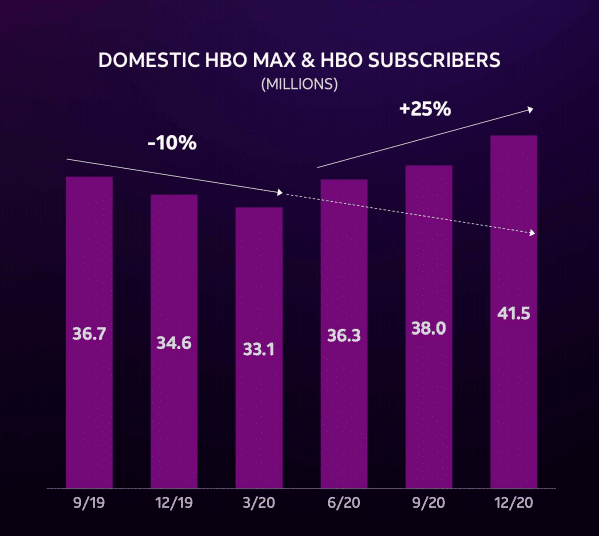AT&T said today that it will launch an ad-supported video on demand (AVOD) version of its HBO Max offering in June. The offering will have a reduced price in comparison with HBO Max, the company’s streaming video offering that carries a price of $14.99 monthly.
The company also said it plans to make fiber available to 3 million new locations in 2021.
The announcements were made at a virtual analyst event that was webcast this morning.
AVOD HBO Max
The AVOD HBO Max offering will be “a powerful way to lower prices,” said Jason Kilar, CEO of AT&T’s Warnermedia business, at the AT&T virtual analyst event.
According to Kilar, the AVOD offering will have the same content as the company’s existing HBO Max subscription video on demand (SVOD) offering other than it won’t include new movies released simultaneously in theatres.
AT&T gained ownership of HBO in 2018 when it acquired Time Warner. Since then, the company has attracted a younger audience and grown the subscriber base, Kilar noted.
AT&T expects to have 41 million HBO Max and HBO subscribers in the U.S. by the end of 2022.
HBO Max has benefitted AT&T in various ways, Kilar said. The company earns a 90% margin from each retail subscriber. Customers who take the service are less likely to churn and have higher net promoter scores, he noted. They also are two times more engaged than linear TV viewers measured by daily viewing hours.
AT&T Fiber
AT&T was the third major U.S. communications service provider – along with Verizon and T-Mobile – to offer a virtual analyst event this week. There were several key differences between the AT&T event and the events put on by its competitors.
AT&T is the only one of the three that has made such a big bet on content with the Time Warner acquisition. The company also has a different view on broadband in comparison with the other two companies.
T-Mobile doesn’t have a wireline broadband business but hopes to gain share in the fixed broadband market by offering a fixed wireless product. Verizon does have wireline broadband but has sold off those operations in many states and has scaled back on investment in fiber broadband in recent years. That company also has big plans for fixed wireless.
AT&T, on the other hand, sees fixed wireless as a “niche” market, said Jeff McElfresh, CEO of AT&T Communications, at today’s event. While low-frequency spectrum offers the best propagation, the speeds that it can support are lower, he explained.
Mid-band spectrum, such as the C-band spectrum that all three wireless carriers picked up in the recent record-setting auction, supports higher speeds, but AT&T is concerned about its ability to penetrate the walls of buildings, he said.
AT&T CEO John Stankey said mid-band spectrum can provide indoor coverage but requires a “conscious decision” to architect the network to support that requirement.
AT&T will use fixed wireless to serve locations where fiber doesn’t make economic sense, however, the executives said.
AT&T currently has 14 million broadband subscribers, 5 million of which are served by fiber, McElfresh noted.
A copy of AT&T’s presentation from the analyst event is available at this link.




